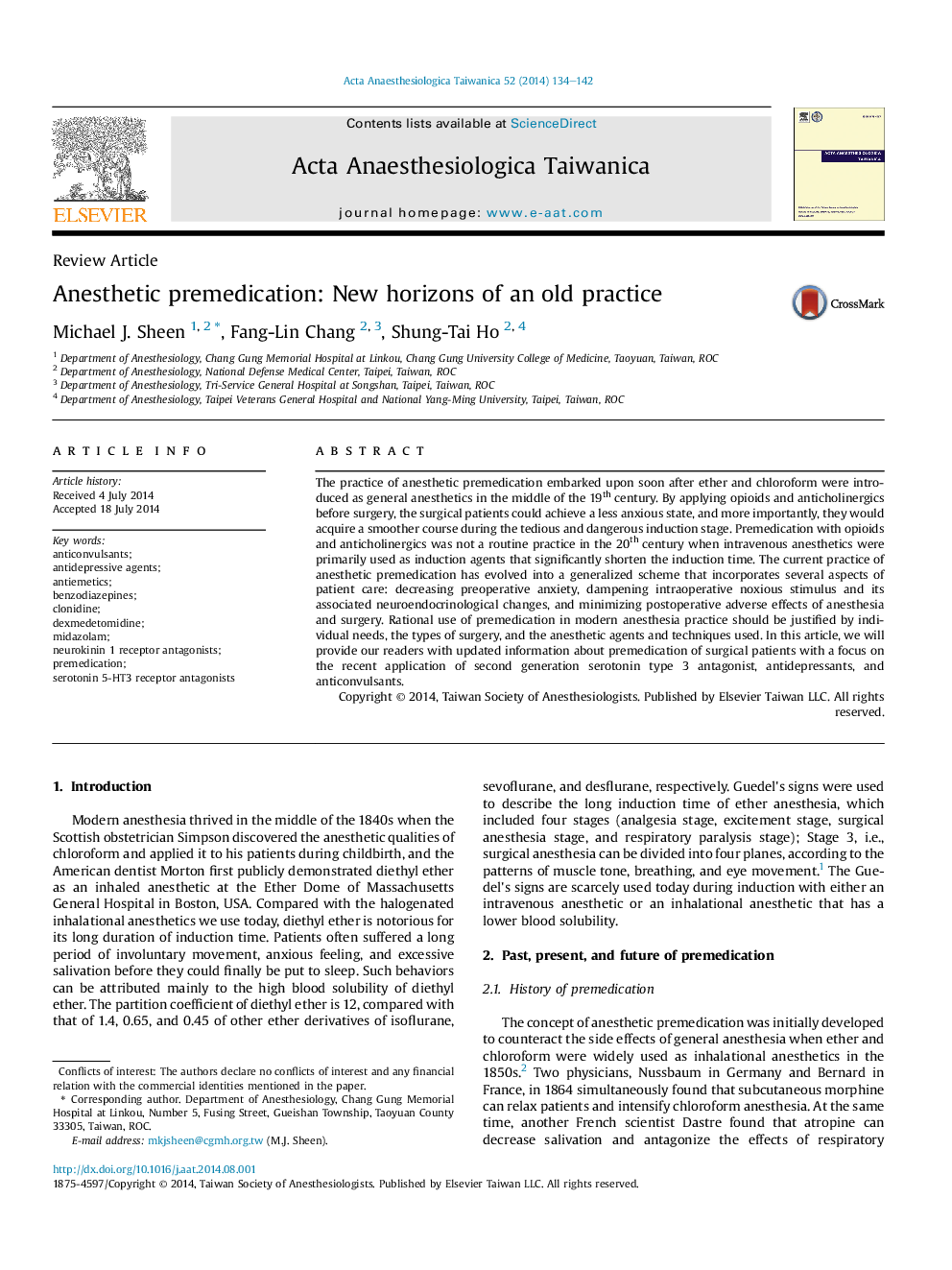| کد مقاله | کد نشریه | سال انتشار | مقاله انگلیسی | نسخه تمام متن |
|---|---|---|---|---|
| 2741467 | 1148532 | 2014 | 9 صفحه PDF | دانلود رایگان |
The practice of anesthetic premedication embarked upon soon after ether and chloroform were introduced as general anesthetics in the middle of the 19th century. By applying opioids and anticholinergics before surgery, the surgical patients could achieve a less anxious state, and more importantly, they would acquire a smoother course during the tedious and dangerous induction stage. Premedication with opioids and anticholinergics was not a routine practice in the 20th century when intravenous anesthetics were primarily used as induction agents that significantly shorten the induction time. The current practice of anesthetic premedication has evolved into a generalized scheme that incorporates several aspects of patient care: decreasing preoperative anxiety, dampening intraoperative noxious stimulus and its associated neuroendocrinological changes, and minimizing postoperative adverse effects of anesthesia and surgery. Rational use of premedication in modern anesthesia practice should be justified by individual needs, the types of surgery, and the anesthetic agents and techniques used. In this article, we will provide our readers with updated information about premedication of surgical patients with a focus on the recent application of second generation serotonin type 3 antagonist, antidepressants, and anticonvulsants.
Journal: Acta Anaesthesiologica Taiwanica - Volume 52, Issue 3, September 2014, Pages 134–142
